Sex differences and immune correlates of Long Covid development, symptom persistence, and resolution
- PMID: 39536117
- PMCID: PMC12148066
- DOI: 10.1126/scitranslmed.adr1032
Sex differences and immune correlates of Long Covid development, symptom persistence, and resolution
Abstract
Sex differences have been observed in acute coronavirus disease 2019 (COVID-19) and Long Covid (LC) outcomes, with greater disease severity and mortality during acute infection in males and greater proportions of females developing LC. We hypothesized that sex-specific immune dysregulation contributes to LC pathogenesis. To investigate the immunologic underpinnings of LC development and symptom persistence, we performed multiomic analyses on blood samples obtained during acute severe acute respiratory syndrome coronavirus 2 (SARS-CoV-2) infection and 3 and 12 months after infection in a cohort of 45 participants who either developed LC or recovered. Several sex-specific immune pathways were associated with LC. Males who would later develop LC exhibited increases in transforming growth factor-β (TGF-β) signaling during acute infection, whereas females who would go on to develop LC had reduced TGFB1 expression. Females who developed LC demonstrated increased expression of XIST, an RNA gene implicated in autoimmunity, during acute infection compared with females who recovered. Many immune features of LC were also conserved across sexes, such as alterations in monocyte phenotype and activation state. Nuclear factor κB (NF-κB) transcription factors were up-regulated in many cell types at acute and convalescent time points. Those with ongoing LC demonstrated reduced ETS1 expression across lymphocyte subsets and elevated intracellular IL-4 in T cell subsets, suggesting that ETS1 alterations may drive aberrantly elevated T helper cell 2-like responses in LC. Altogether, this study describes multiple innate and adaptive immune correlates of LC, some of which differ by sex, and offers insights toward the pursuit of tailored therapeutics.
Conflict of interest statement
U.S. reports research support from the National Institutes of Health, Agency for Healthcare Research and Quality, and Pfizer Inc.; she is an advisor to Regeneron and Gilead. C.A.B. is an advisor to Immunebridge and DeepCell on topics unrelated to this research. All other authors declare that they have no competing interests.
Figures

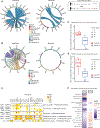


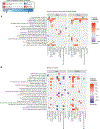
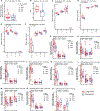
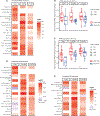
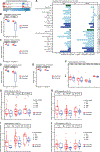
Update of
-
Sex differences and immune correlates of Long COVID development, persistence, and resolution.bioRxiv [Preprint]. 2024 Jun 19:2024.06.18.599612. doi: 10.1101/2024.06.18.599612. bioRxiv. 2024. Update in: Sci Transl Med. 2024 Nov 13;16(773):eadr1032. doi: 10.1126/scitranslmed.adr1032. PMID: 38948732 Free PMC article. Updated. Preprint.
References
-
- World Health Organization Coronavirus (COVID-19) Dashboard; https://covid19.who.int.
-
- World Health Organization, “Coronavirus disease (COVID-19): Post COVID-19 condition,” 28 March 2023; https://who.int/news-room/questions-and-answers/item/coronavirus-disease....
-
- Klein J, Wood J, Jaycox J, Dhodapkar RM, Lu P, Gehlhausen JR, Tabachnikova A, Greene K, Tabacof L, Malik AA, Monteiro VS, Silva J, Kamath K, Zhang M, Dhal A, Ott IM, Valle G, Peña-Hernandez M, Mao T, Bhattacharjee B, Takahashi T, Lucas C, Song E, Mccarthy D, Breyman E, Tosto-Mancuso J, Dai Y, Perotti E, Akduman K, Tzeng TJ, Xu L, Geraghty AC, Monje M, Yildirim I, Shon J, Medzhitov R, Lutchmansingh D, Possick JD, Kaminski N, Omer SB, Krumholz HM, Guan L, Dela Cruz CS, van Dijk D, Ring AM, Putrino D, Iwasaki A, Distinguishing features of long COVID identified through immune profiling. Nature 623, 139–148 (2023). - PMC - PubMed
-
- Su Y, Yuan D, Chen DG, Ng RH, Wang K, Choi J, Li S, Hong S, Zhang R, Xie J, Kornilov SA, Scherler K, Pavlovitch-Bedzyk AJ, Dong S, Lausted C, Lee I, Fallen S, Dai CL, Baloni P, Smith B, Duvvuri VR, Anderson KG, Li J, Yang F, Duncombe CJ, McCulloch DJ, Rostomily C, Troisch P, Zhou J, Mackay S, DeGottardi Q, May DH, Taniguchi R, Gittelman RM, Klinger M, Snyder TM, Roper R, Wojciechowska G, Murray K, Edmark R, Evans S, Jones L, Zhou Y, Rowen L, Liu R, Chour W, Algren HA, Berrington WR, Wallick JA, Cochran RA, Micikas ME; ISB-Swedish COVID-19 Biobanking Unit, Wrin T, Petropoulos CJ, Cole HR, Fischer TD, Wei W, Hoon DSB, Price ND, Subramanian N, Hill JA, Hadlock J, Magis AT, Ribas A, Lanier LL, Boyd SD, Bluestone JA, Chu H, Hood L, Gottardo R, Greenberg PD, Davis MM, Goldman JD, Heath JR, Multiple early factors anticipate post-acute COVID-19 sequelae. Cell 185, 881–895.e20 (2022). - PMC - PubMed
-
- Phetsouphanh C, Darley DR, Wilson DB, Howe A, Munier CML, Patel SK, Juno JA, Burrell LM, Kent SJ, Dore GJ, Kelleher AD, Matthews GV, Immunological dysfunction persists for 8 months following initial mild-to-moderate SARS-CoV-2 infection. Nat. Immunol 23, 210–216 (2022). - PubMed
Publication types
MeSH terms
Substances
Grants and funding
LinkOut - more resources
Full Text Sources
Medical
Miscellaneous

